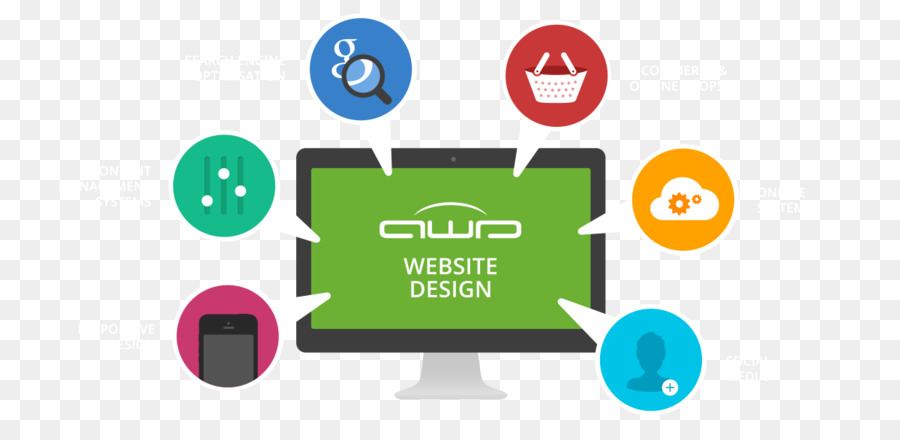Interested In Discovering Exactly How Website Design Has Advanced For Many Years? Explore The Trip From Standard, Uncomplicated Designs To User-Centric Interfaces That Focus On The Site Visitor'S Experience
Interested In Discovering Exactly How Website Design Has Advanced For Many Years? Explore The Trip From Standard, Uncomplicated Designs To User-Centric Interfaces That Focus On The Site Visitor'S Experience
Blog Article
Suggested Reading By-Lamb Harding
In the past, web sites were easy and concentrated on info. Navigating was straight, and layout was for desktop computers. Now, individual experience is crucial. Data guides styles for very easy navigating. Responsive formats match different devices. Today, dark mode minimizes strain, and minimal food selections enhance navigating. Interactive functions engage customers, and bold visuals stand out. AI combination boosts interaction. See exactly how design has actually progressed to improve your on-line journey.
Very Early Days of Web Design
In the early days of website design, simpleness reigned supreme. Sites were standard, with minimal shades, fonts, and layouts. The focus got on providing info instead of fancy visuals. Individuals accessed the net with slow-moving dial-up links, so rate and performance were key.
Navigation menus were straightforward, normally located on top or side of the page. search engine optimisation costs were developed for desktop, as mobile surfing wasn't yet prevalent. Material was king, and designers prioritized very easy readability over complicated style aspects.
HTML was the key coding language used, and developers had to work within its restrictions. Animations and interactive functions were very little contrasted to today's standards. Web sites were static, with little vibrant web content or customized user experiences.
Surge of User-Focused Design
With the evolution of website style, a change towards user-focused design concepts has actually become significantly famous. Today, developing sites that focus on individual experience is critical for involving site visitors and achieving business goals. User-focused design includes understanding the needs, preferences, and behaviors of your target audience to tailor the site's format, material, and features accordingly.
Designers now conduct extensive study, such as user surveys and functionality screening, to gather insights and comments straight from customers. This data-driven technique helps in creating intuitive navigating, clear calls-to-action, and aesthetically attractive interfaces that resonate with site visitors. By placing the customer at the center of the style procedure, websites can supply an extra customized and satisfying experience.
optimize your website for google search has additionally emerged as a key element of user-focused layout, making certain that sites are optimized for different devices and display dimensions. This flexibility improves ease of access and use, accommodating the varied means individuals engage with sites today. Fundamentally, the surge of user-focused layout indicates a change towards creating digital experiences that focus on the requirements and assumptions of the end user.
Modern Trends in Web Design
Check out the most recent fads shaping website design today. One noticeable trend is dark setting style, supplying a smooth and modern-day appearance while reducing eye pressure in low-light atmospheres. https://www.searchenginejournal.com/googlebot-crawl-budget-factors/413993/ is minimalist navigating, simplifying menus and enhancing individual experience by concentrating on essential elements. Incorporating micro-interactions, such as computer animated switches or scrolling effects, can produce a more engaging and interactive internet site. Responsive layout remains vital, making certain seamless customer experiences across various gadgets. Additionally, making use of strong typography and asymmetrical designs can add visual interest and draw attention to particular material.
Integrating AI technology, like chatbots for consumer assistance or individualized recommendations, enhances customer engagement and improves processes. Ease of access has additionally end up being a substantial pattern, with developers prioritizing comprehensive design practices to satisfy varied user requirements. Embracing sustainability by maximizing internet site performance for rate and performance is one more arising pattern in web design. Collaborating with customer feedback and information analytics to repeat and boost layout continually is vital for staying appropriate in the ever-evolving digital landscape. By welcoming these modern-day patterns, you can develop a visually attractive, straightforward site that resonates with your target market.
Final thought
As you assess the evolution of website layout from the early days to now, you can see just how user-focused layout has actually come to be the driving force behind modern patterns.
Embrace the trip of adjustment and adjustment in website design, always maintaining the user experience at the forefront.
Keep present with the most recent fads and innovations, and never ever quit progressing your method to produce aesthetically stunning and easy to use web sites.
Advance, adapt, and develop - the future of web design remains in your hands.
